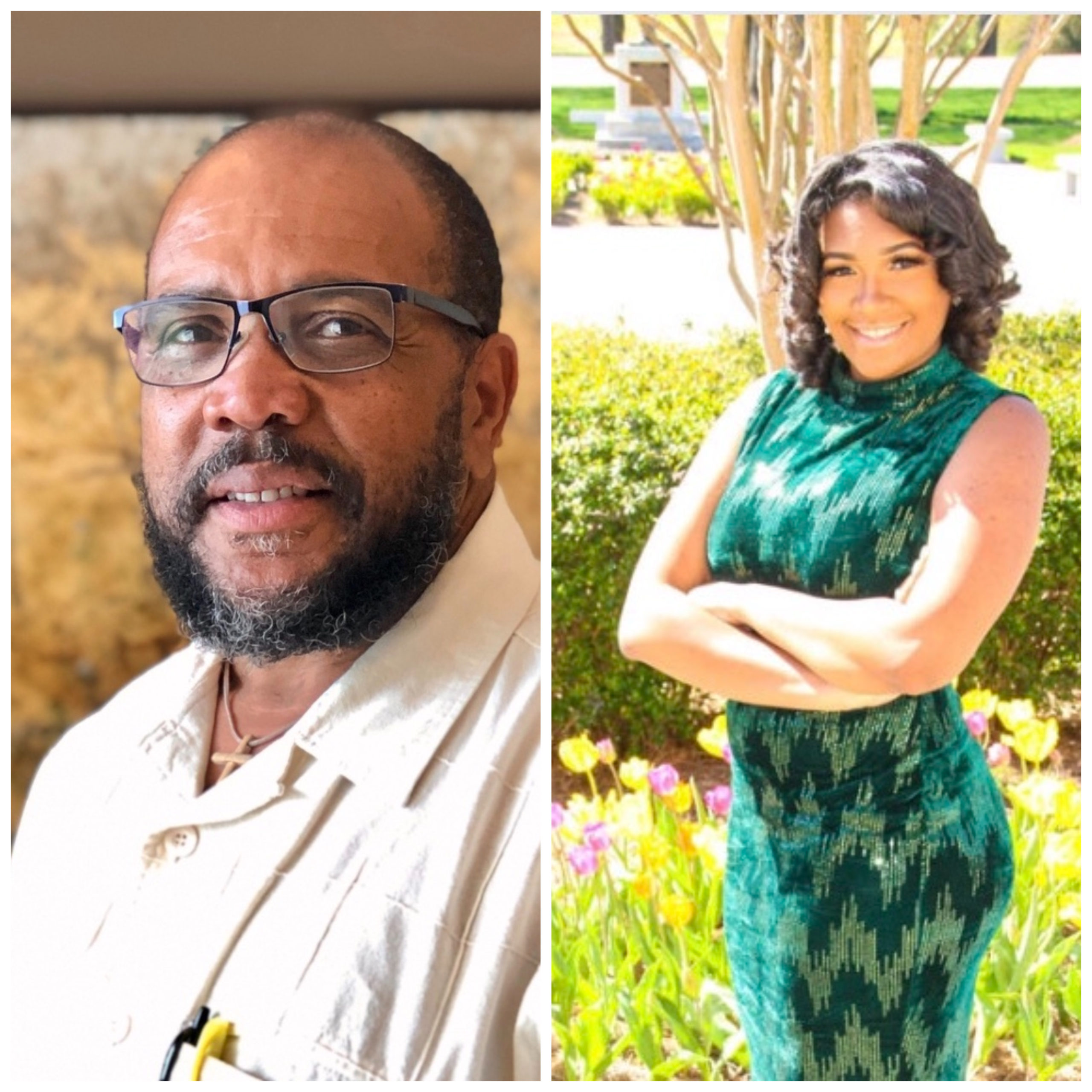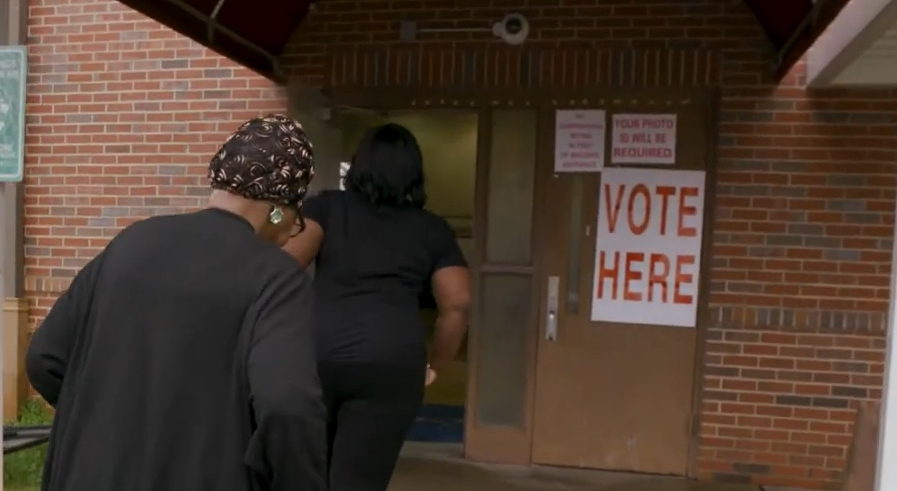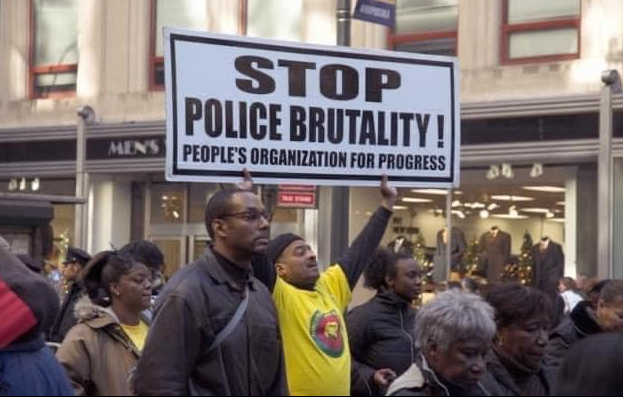Reverend Charles Young (left to right) and Ashley Griffin pictured above. Photo Credit: Charles Young and Ashley Griffin
On an afternoon in late June, Mound Bayou native Reverend Charles Young, 64, sat at his work desk as he heard the news that the Mississippi State Flag will no longer fly. His thoughts were similar to those of other Black folks in the region: a reckoning is happening.
“I tuned in and happened to catch history in the making where the Legislative Black Caucus were out in front of the Capitol steps … but my response was, I’m a Mississippi boy. Born and raised. I was born right here in the heart of this mess,” Young, the pastor, said. “There is a fear that has come over white America that is unlike anything I have ever witnessed in my 64 years.”
What Young is referencing is the pressure top political, business, sports and religious organizations placed on the Republican-led Mississippi State Legislature to remove its state flag, which bore the Confederate emblem. For many years, this symbol has caused division within the state as many associated it with slavery and hatred while other garnered it as heritage. After more than a century of flying it, state lawmakers passed legislation last month to retire the flag for good.
After the votes, Speaker of the House Philip Gunn said Mississippi was “better today” than yesterday, Mississippi Today reported.
“Today, the future has taken root in the present. Today, we and the rest of the nation can look on our state with new eyes, with pride and hope,” he said. “We are not betraying our heritage. We are fulfilling it.”
This comes on the heels as communities across the country and Mississippi protested the murders of George Floyd, Ahmaud Arbery, Breonna Taylor, and countless other Black people whose names have not hit mainstream media. For 22-year-old Cleveland resident, Brandon Tucker, Gov. Tate Reeves’ signing the bill into law wasn’t sincere.
“In light of everything that’s going on, I was kind of like, this is a consolation prize,” Tucker said. “I don’t know. I really feel like he did it so he wouldn’t lose voters, not more so just because he genuinely cared about removing the state flag.”
Removing the flag is the first step, Mississippi residents say, but in order to progress, conversations around race and racism must take place.
Tucker added, “Certain white people that are my age don’t really understand the significance of what it means to have a Confederate flag in a state that is majority Black people. It’s certain conversations that would have to be had.”
Ashley Griffin, 23-year old from Greenwood, cried and bought tacos to celebrate when she heard the news on social media. She hopes the next step means enacting programs that minimize the disparity gaps in healthcare and homelessness.
“I know a lot of the issues with Obamacare and us not opting in. But us not opting in the program actually hurt us. I feel like we should really care less about the parties and more about the policy and the people,” the research graduate student said.
While Mississippi is now without a flag, Gov. Reeves, Lt. Gov. Delbert Hosemann, and Gunn appointed a nine-member state flag commission tasked to oversee the new flag design. The commission received over 1,000 flag designs submitted by the public, Mississippi Today reported. The flag must include the words “In God We Trust.” The commission plans to approve a new flag design by Sept 2., so voters will get a chance to vote on the new design at the November 3 general election.
In spite of the flag change, Mississippi, comprised of 58 percent Black people, must address its underlying issues, particularly its voting system, or it’s going “to be Hell to pay,” Young said.
“People are tired of seeing the lifestyles of the rich and famous on the backs of their lives when they can’t put food on the table to feed their family,” he said. “I believe that a practical implementation, or application, or expression, or a movement towards pragmatic reflection of the removal of the flag extends towards changing the way we select our leadership that’s more reflective of what this state looks like.”

















